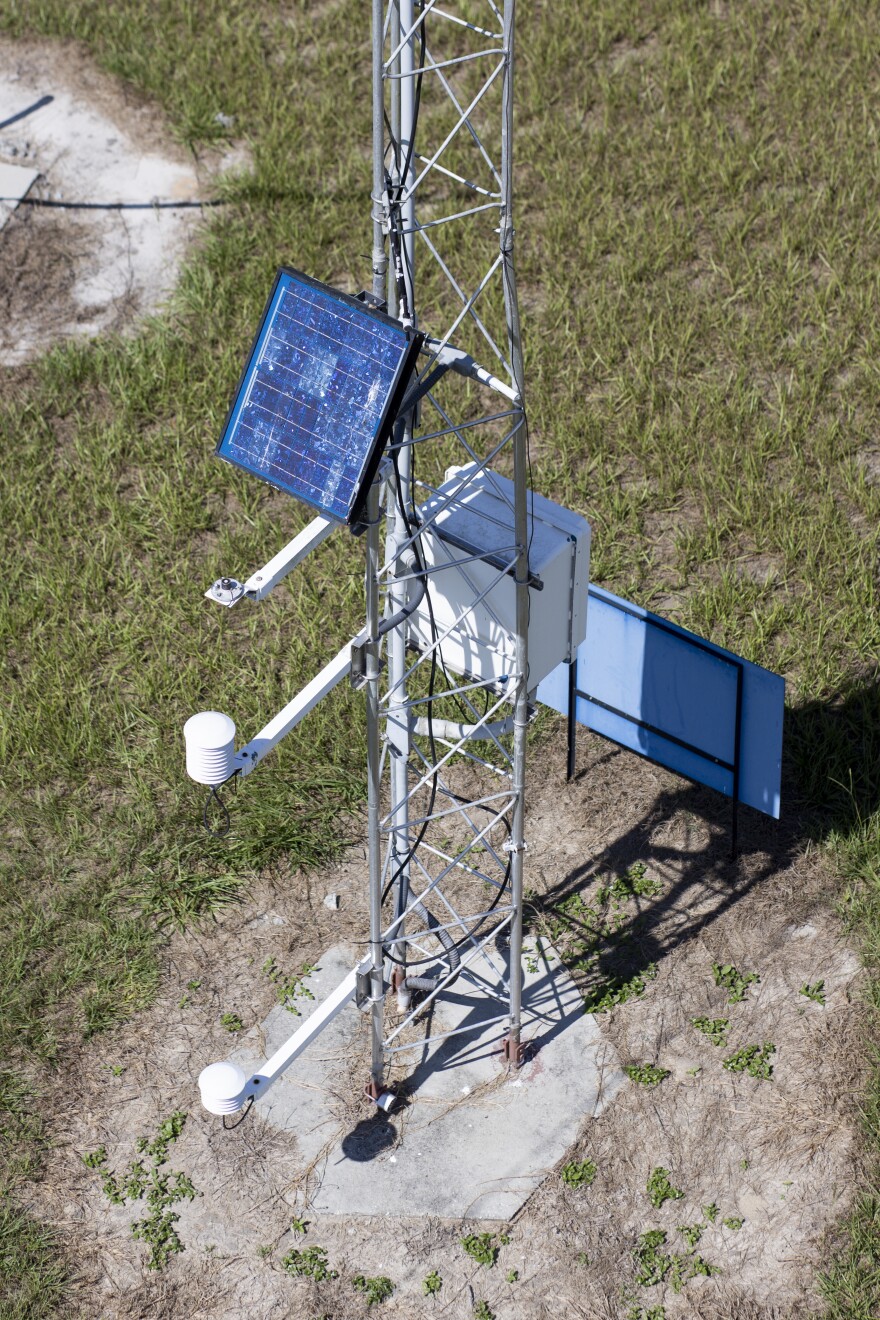The University of Florida, Institute of Food and Agricultural Sciences has been partnering with a global environmental organization to open weather stations in nature preserves across the state. The latest projects are meant to help determine wildfire risk.
For the past 25 years, UF/IFAS has worked to generate weather forecasts specifically for growers in rural parts of the state, especially during winter months when the temperature gets chillier. The Florida Automated Weather Network, or FAWN, has stations collecting data from the Panhandle to south of Miami.
Rick Lusher, the IT project manager with UF/IFAS who manages FAWN, said each station has a 30-foot tower with sensors that are at the same height as the National Weather Service's, so data can be easily shared.
"A farmer might look at things like rainfall to see what they might need to do with their watering schedules ... or temperatures are important as we get into the fall and winter. Believe it or not, crops in Florida do require freeze protection," he said.

UF/IFAS shared a report with WUSF of survey data from users of FAWN. Of the 117 surveyed who shared which FAWN tools and data they typically use, 19% said they used cold-protection, decision-making tools, 16% said they used the graphic weather data, 15% said they used the graphic forecast data, 12% said they used the air temperature threshold data (including "chill hours") and 10% said they used irrigation scheduling tools.
Out of 18 responses to how those surveyed benefited from using the irrigation scheduling tools, 50% said they reduced the amount of water use, 22% said they were able to save crops from severe damage, and 17% said they reduced costs or increased dollar returns.
When asked how those surveyed benefited from using the cold-protection, decision-making tools, 40% of 42 people surveyed said their crops were saved from severe damage or that their livestock avoided harm.
In the portion of the survey asking people how much money they saved from using FAWN due to protected crops, reduced water or pesticide use, reduced vet costs or increased dollar returns, one person reported saving about $30,000 over three years. Another person reported saving $1,000 per year since 2010. Someone else said tens of thousands of dollars was saved from using FAWN tools during freeze events for protection between 2010 and 2018.
UF/IFAS runs 48 weather stations; three were recently installed in collaboration with the Nature Conservancy at preserves that the organization owns.
The latest one, which started functioning in November, is at Tiger Creek Preserve in Polk County.
This particular data collection is meant to assess wildfire risk for the Nature Conservancy's preserves, according to Lusher.
"They're all natural lands, and so they want to be sure to protect those as best as possible,” he said. “The primary goal of those is to help the Nature Conservancy, but anywhere we have a weather station is going to be useful."
UF/IFAS and the Nature Conservancy have already installed stations in Bristol and Poinciana. They plan to complete a fourth at Blowing Rocks Preserve in Martin County, possibly by spring 2023.
Copyright 2023 WUSF Public Media - WUSF 89.7. To see more, visit WUSF Public Media - WUSF 89.7.






